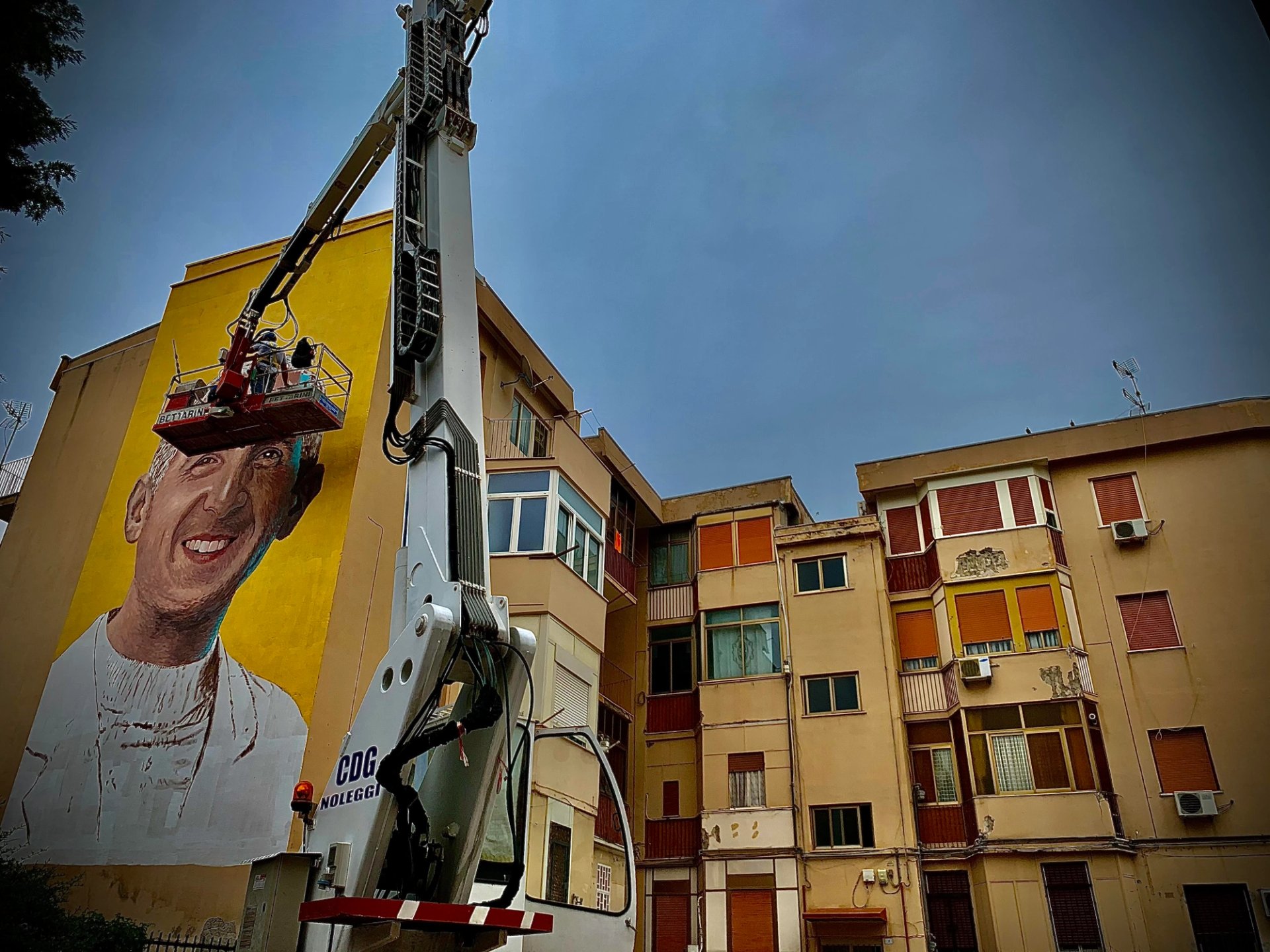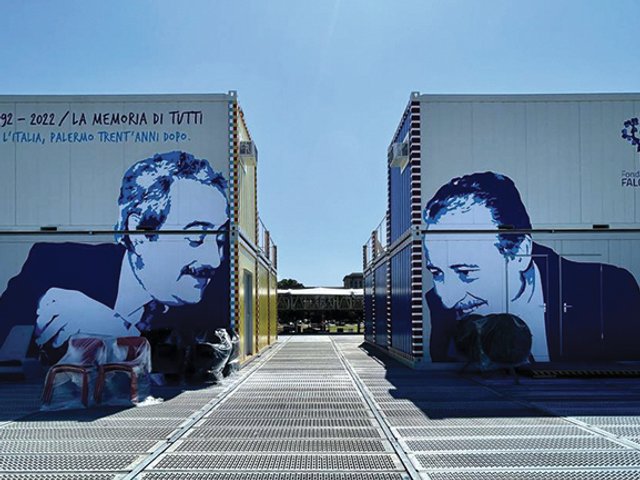Four major public art commissions honouring victims of the Mafia have been unveiled in Palermo, marking the start of a three year project which aims to unite the local community in their collective opposition to organised crime.
Entitled Spazi Capaci, the project includes the first ever contemporary art exhibition in the high-security bunker of the Ucciardone prison, built for the Maxi Trial, the landmark criminal trial of Mafia bosses, which took place in Palermo from 1986 to 1992.
Patrizio Bianchi, Italy’s education minister, attended the inauguration of the project on 23 May. The date marked the 29th anniversary of the Capaci massacre, when a car bomb placed by the Mafia along the A29 motorway exploded, killing the Maxi Trial judge Giovanni Falcone.
The commissions include two 30m-tall murals by artist Andrea Buglisi of Falcone and fellow magistrate Paolo Borsellino, who was assassinated two months after Falcone, and a sculpture by Peter Demetz of a woman contemplating the Falcone tree, a rubber plant near the magistrate’s former home. In Brancaccio, a neighbourhood that was once a Mafia stronghold, a triptych of murals by Igor Scalisi Palminteri honours the martyred local priest Padre Pino Puglisi.

For the Ucciardone project, Velasco Vitali has created 54 life-sized statues of dogs from iron, foil and concrete Courtesy of Alessandro De Lisi
For the Ucciardone project, Velasco Vitali has created 54 life-sized statues of dogs from iron, foil and concrete. These have been distributed within the bunker and the car park outside, while a golden dog in bronze and wax was placed inside the prison's high security archive. The bunker is still operative, so the dogs inside were removed a week after the exhibition opened in May. Those in the car park, however, will remain until September.
“The dogs represent the criminals’ hunger for power and the Mafia’s abuse of society,” Alessandro De Lisi, General Curator of Spazi Capaci, tells The Art Newspaper. “The golden dog, on the other hand, is the guardian of memories and justice.”
The project—for which the Fondazione Falcone, the Ministry of Education and private donors have so far provided a total of €40,000—was devised by the Fondazione in efforts to prevent the Mafia from reasserting its influence during the lockdown. “The Mafia works by marking its territory,” Maria Falcone, sister of the late Giovanni and president of the Falcone Foundation, tells The Art Newspaper. “In the last few years we Palermitans have demonstrated that the city is ours, not the Mafia’s. This was not so easy during the lockdown, so we filled the city with art to show that we are still here.”

In Brancaccio, a triptych of murals by Igor Scalisi Palminteri honours the martyred local priest Padre Pino Puglisi Courtesy of Alessandro De Lisi
De Lisi, whose recent curatorial projects include a 2015 exhibition of Caravaggio paintings from the Uffizi in Camorra stronghold Casal Di Principe near Naples, said 1,500 Palermitans have been involved in Spazi Capaci, from school children who met the artists to Carabinieri officers who installed the dogs in the bunker. Before work on the murals could start, De Lisi had to obtain residents’ permission. During the lockdown, he therefore met with residents assembled on their balconies, shouting his plans from the street below through a loudspeaker before asking them to sign a letter of consent.
Art has long been central to veteran mayor Leoluca Orlando’s efforts to regenerate Palermo following the ravages of the Mafia, but Spazi Capaci extends beyond the Sicilian capital. On 23 May, huge sheets emblazoned with the faces of Borsellino and Falcone were unfurled on buildings in 19 Italian cities, including Rome’s Colosseum and Milan’s Museo del Novecento, and De Lisi hopes to curate an audio installation on Ellis Island in New York next year.
While Cosa Nostra, the Sicilian mafia, has been in decline since the 1990s, other organised crime syndicates in Italy are currently on the rise. “Giovanni [Falcone] always said the fight against the Mafia must also be the fight against the mafias,” Falcone says. “The [Calabrian] ‘NDrangheta is growing and has a booming drugs trade with America. The fight is not over: we need to be vigilant.”



